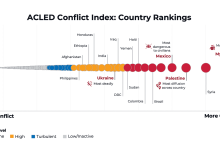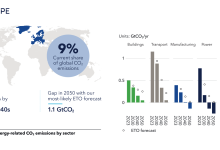Age of Neuralink and A.I.
Disaster or Breakthrough for the Energy Sector?
History is being written these days, and we’re part of it. The concept of A.I. was coined for the first time in the 1950s, but we’re only now starting to catch a glimpse of its full potential. However, there are those who can attest to the fact that A.I. is still in its infancy, and we haven’t yet witnessed its full power. To top it all off, Elon Musk just created a brain-computer interface.
Very well, but how and why does this impact the Energy Sector? Read on and you might be amazed.
What is the Neuralink?
As mentioned above, Neuralink is the latest and greatest invention by the visionary and rather polarizing Elon Musk. A brain-computer interface that is fully implantable, practically invisible, and allows you to control computers and mobile devices from anywhere. Other people won’t even know you have one.
Yes, it sounds rather Science Fiction, but it is not. Not anymore. You get an implant that is sealed in a biocompatible enclosure and is powered by a small battery which you can charge wirelessly. The chips in the implant then process your neural signals, transmit them to the Neuralink Application, the application decodes the data stream into actions, and you move the mouse with your mind.
The closest thing we now have to “mind reading”. Sure, for the time being it’s about improving lives and restoring independence to people suffering from diverse medical afflictions, but in a couple of years we could be using it to access YouTube with our mind while riding the metro. Or to check the barrel price online while walking the dog.
Endless possibilities
The possibilities really are endless.
Sure, Musk claims that it will be used to treat autism, depression, schizophrenia or even obesity. But safety protocols are still up for debate, as Reuters reports the U.S. Department of Transportation has fined Neuralink Corp. for improper packaging of hazardous waste. As per the cited records, the company was fined a total of $2,480. However, they did agree to fix the problems.
A.I. in the present
If you haven’t been living under a rock for the last 5 years, you’re definitely up to speed on the fact that A.I. has now permeated the most important industries known to man. You’d actually be hard-pressed to find an industry, at least a profitable one, where A.I. hasn’t already been proposed as the be-all and end-all solution for optimization, automation and all-around efficiency.
Whether A.I. really is intelligent or not or is simply a learning model that picks up on patterns, and mixes and matches information, remains to be seen. What is certain is that it has taken the Energy Sector by storm. We’ll be talking about specific applications in what follows.
A match made in heaven?
The next logical question to ask relates to how A.I. and the Neuralink can work together. Apparently, an integration between the two technologies could, at least in theory, create a direct bridge between human beings and machines. That would mean we will be able to process information faster, learn at an accelerated rate, increase our problem-solving capacity, or even improve the way we control prosthetic limbs.
The more enthusiastic among us would have us believe that we’ll be able to learn languages instantly, communicate telepathically or never forget anything.
At the same time, Elon Musk says this would end the debate on “human vs A.I.” and usher in an era of symbiosis between man and robot. Remains to be seen how much of that is truth and how much is marketing.

How are we already using A.I.?
There’s no major industry that hasn’t already been affected or reaped the benefits of A.I. as of 2024. From health care and banking to marketing and commerce, or media and manufacturing, there’s no activity that hasn’t been disrupted by the new way of doing things.
All experts seem to agree that most common use cases of A.I. for business fall in one of the following categories:
- Automation
- Risk Assessment
- Optimization Management
- Data Analysis and Insights
- Personalization
- Image and Video Analysis
- Process Improvement
- Customer Service
- Quality Control
- Research and Development
- Marketing and Advertising
- Predictive Analytics
Virtual assistants, data crunching, risk prediction, demand forecasting and inventory management, algorithmic trading, resource management – it’s all become a lot easier, faster, and smarter since A.I. has made an entrance.
Now, imagine doing all that, but not on a computer, mobile or tablet. In your head. By just willing it.
A.I. and the Energy Sector: Current and future uses
A.I. has already been used in the Energy Sector for the past couple of years and the results are truly impressive. Let’s focus on some of the most notable applications.
- Optimizing energy consumption
Rising prices and decarbonization do not go well together, that’s a fact. However, this is exactly the problem most business leaders face long-term: how to reduce the carbon footprint while remaining cost-effective?
Apparently, the perfect combination is digitization and A.I. To reach their sustainability goals, companies have to start deploying and integrating renewable energy solutions. At the same time, they need to ensure enough reliable power. The problem lies with renewable energy sources that produce an inconsistent supply, due to their dependency on environmental conditions.
A.I. comes in and handles the data crunching, revealing both areas of inefficiency and patterns of energy use. As such, business owners know how to manage demand, where and when to extend the grid capacity or install charging infrastructure.
Seeing as more and more companies join the prosumer trend, the best way to use energy effectively and pivot in real time, not just after the fact, is a combination of Big Data and A.I.
- Predictive maintenance
You don’t have to wait for disaster to strike. By using A.I. you can now continuously evaluate the performance of energy assets and identify potential faults in advance. Traditionally, maintenance happens on a regular schedule. By using data provided by A.I. you can switch it up to a personalized maintenance system.
Now, instead of carrying out repairs or examinations too early or too late, you rely on a machine learning algorithm that monitors assets and uses past data regarding performance to predict when intervention will be required. For example, by flagging inconsistencies in electricity generation, outages can be reduced by up to 30%, as opposed to the conventional approach.
- Monitoring of nuclear power plants
There’s no other way to maintain close observation on power plants safety, around the clock, without A.I. It does not get tired, it does not make mistakes, and it can evaluate all data at all times. It can pick up on the slightest deviations from the regular safety standards and even predict potential equipment failure.
Seeing as nuclear power amounts to 10% of electricity worldwide, and the consequences of a nuclear disaster are incalculable, it’s safe to say that A.I. is a crucial ally to have on our side.
- Energy trading
Ever made a bad investment choice? You’ll be happy to know that A.I. algorithms can analyse complex market dynamics, process real-time data on demand, pricing or supply trends and help you make informed and profitable decisions. It also helps you manage risks by proactively assessing market volatility and inherent uncertainties.
Algorithmic trade happens instantly, giving you the option of executing numerous trades in a matter of mere milliseconds. As a result, you’ll be enjoying an optimized energy portfolio, based on analysis sentiment, simulated market scenarios, automated tasks, and continual adaptation to evolving market conditions. A human trader will most likely miss market opportunities or risks without analysing and recognizing patterns and trends. A.I. does the analysis and pattern recognition almost instantly.
- Energy storage
By closely analysing supply, price, grid conditions or demand, A.I. algorithms are able to determine the best time to store energy, how to distribute it and when to release it. Sure, this is great for renewable sources which are dependent on weather conditions, but the real applications are evident when we’re talking about hospitals, emergency services or data centres that could be totally shut down without access to back up power.
- Carbon capture, storage, and utilization
A.I. systems are able to identify the best methods for utilizing captured carbon, be it for long-term storage or varying industrial processes. Sure, a human operator could come up with the same solutions, given enough time, but when we’re talking about mitigating climate change, how long is “too long”?
- Oil and gas exploration
The technology has also changed the exploration sector by analysing a gigantic amount of geological data with what can only be described as “remarkable precision”. Apparently, it can identify potential oil and gas reserves that can’t be detected using traditional methods. On top of that, it can also determine how viable these reserves really are, and guide efforts towards the prospects that are most profitable, thus reducing both costs and wasted resources.
Not to mention the fact that drilling operations are now safer, optimized and more productive.
A.I. challenges
However, it’s not all fun and games. A.I. technology is not cheap and certainly not easy to integrate into the existing energy infrastructure. Careful investment in hardware and software is required, as well as thoughtful planning to account for the downtime and calibration periods. Not to mention the fact that A.I. is mostly trained on historical data, so it may gradually develop its own biases. This could lead to discriminatory practices such as an uneven distribution of resources.
We are also faced with a shortage of professionals skilled in both fields. How many specialists can safely say they understand both the energy industry and advanced A.I. technologies?
Another problem is posed by security. Data privacy and subsequent cyber threats are serious issues, especially if in the coming years everyone will be able to connect to any device simply by using a microchip in their head.
This article was written by a real, live writer, not A.I. But, in the context of continuous technological advancement, when you’ll be able to access online articles while relaxing on the sofa in your living room, will you really be able to tell the difference?
At that point, will it really matter if it’s man or machine? Or both?







